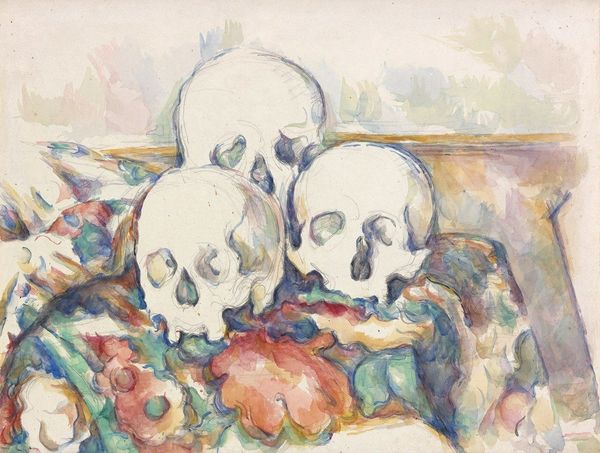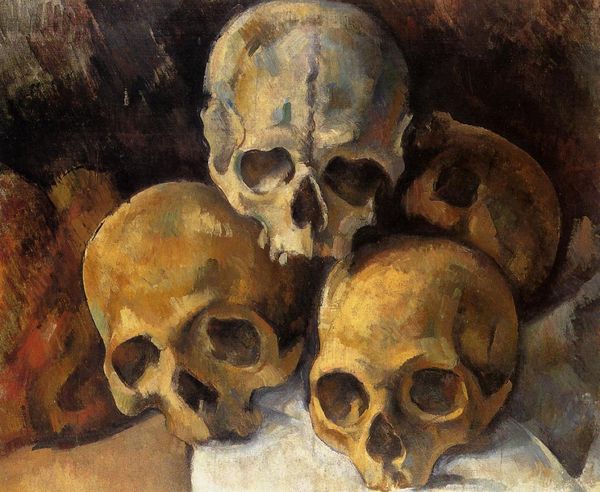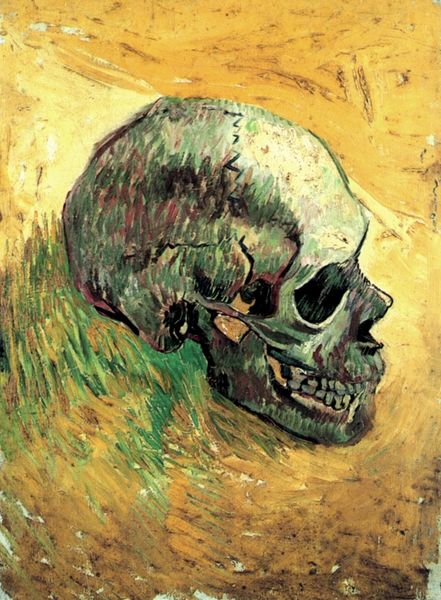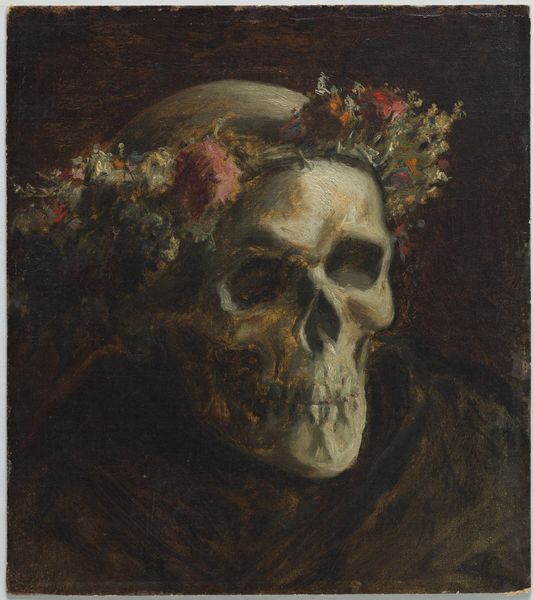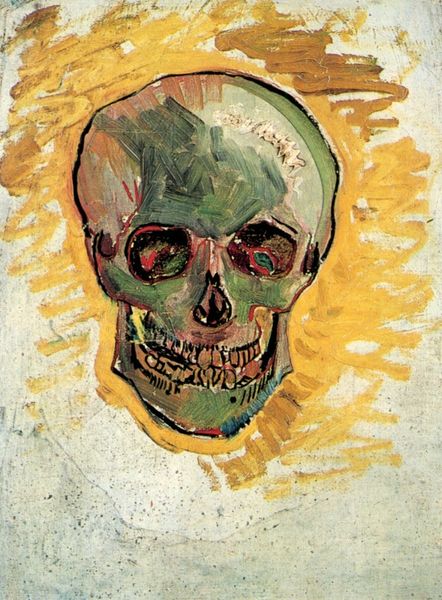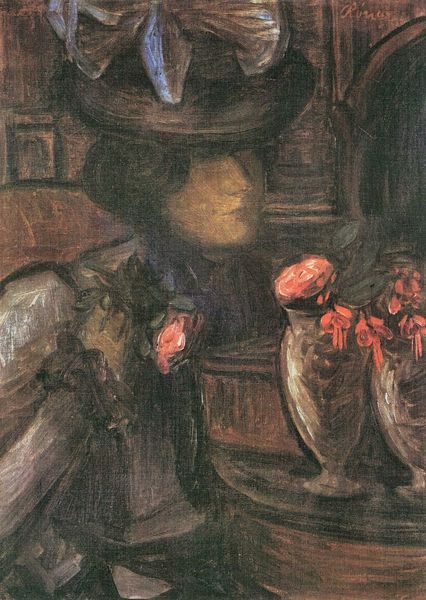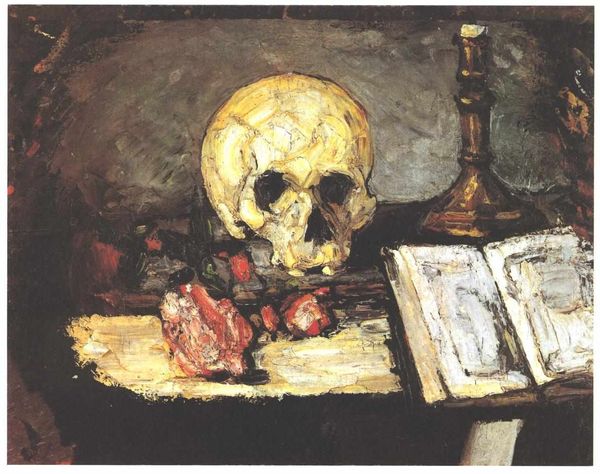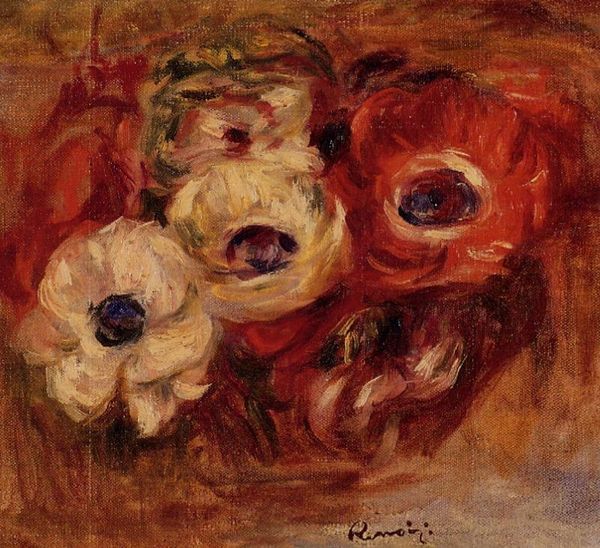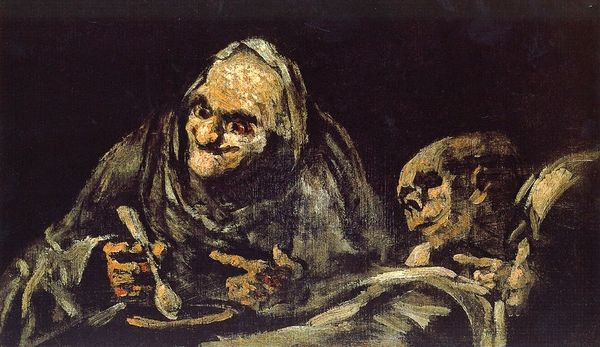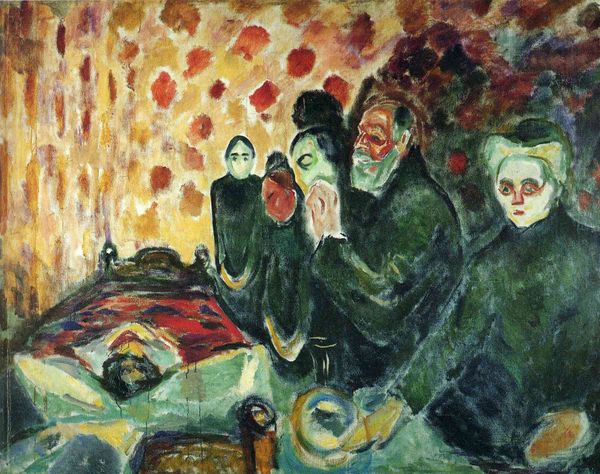
Three Skulls on a Patterned Carpet 1900
0:00
0:00
paulcezanne
Kunstmuseum Solothurn, Solothurn, Switzerland
painting, oil-paint, impasto
#
painting
#
oil-paint
#
oil painting
#
impasto
#
vanitas
#
momento-mori
#
post-impressionism
#
expressionist
Copyright: Public domain
Paul Cézanne's unsettling ‘Three Skulls on a Patterned Carpet’ presents us with mortality, painted with oils in a manner that feels both stark and intimate. The skull, that age-old memento mori, here triples its impact. The patterned carpet introduces a domestic element, a jarring contrast to the stark reminder of death. This juxtaposition echoes through art history, from ancient Roman mosaics to vanitas paintings of the Dutch Golden Age, where skulls mingle with worldly objects, symbolizing the transience of life. Consider the Dance of Death motif, where skeletons lead the living, a chilling reminder of death's inevitability. Cézanne strips away the allegorical trappings, leaving us with raw, unadorned skulls. The effect is visceral, tapping into our collective subconscious, forcing us to confront our mortality. This stark imagery serves as a potent symbol, reminding us of the cyclical nature of existence. Death, decay, and rebirth, playing out on canvas, as it does in life.
Comments
No comments
Be the first to comment and join the conversation on the ultimate creative platform.
